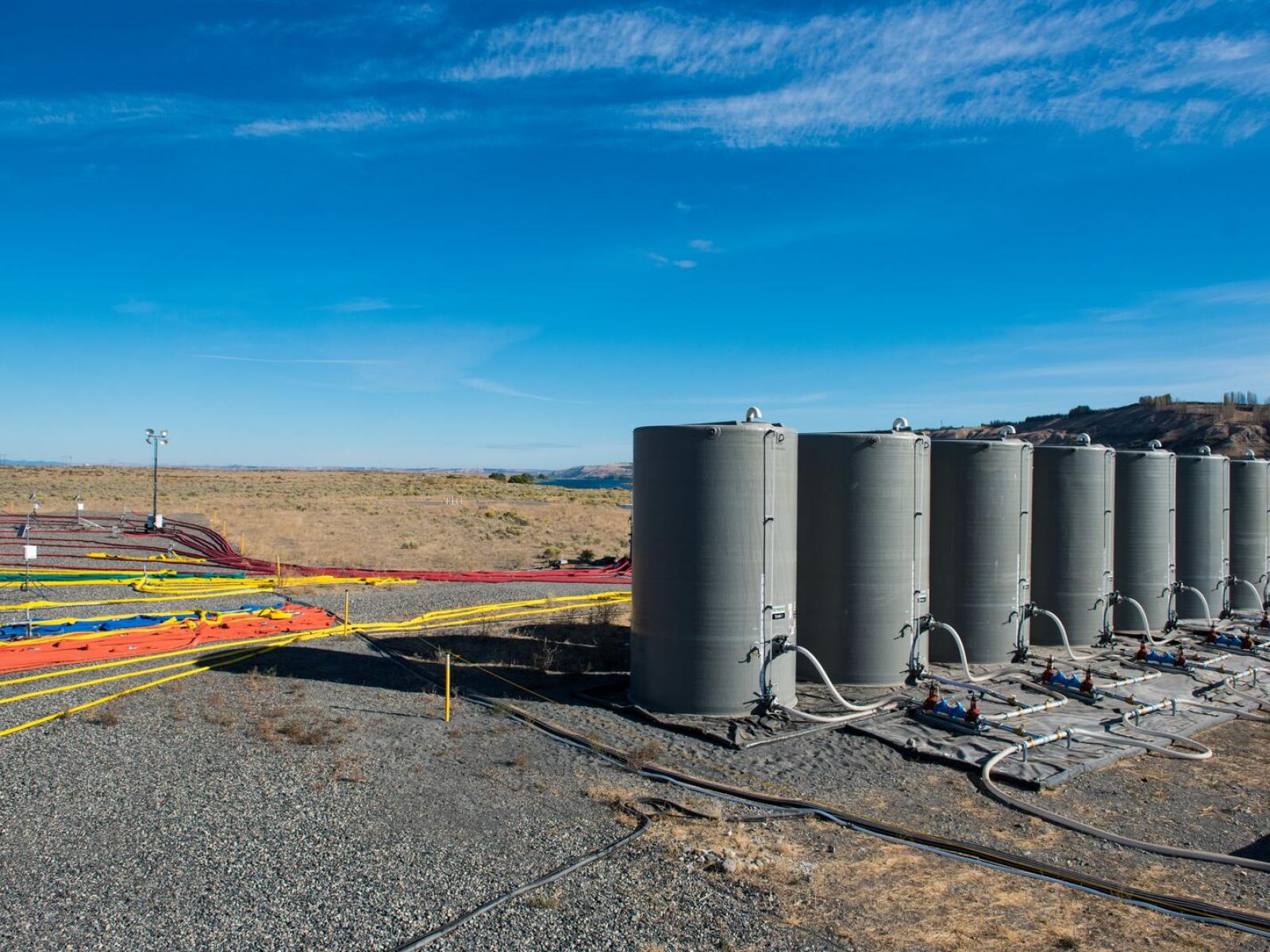Rapid Changes in River Flow can Increase Spreading of Contaminants from Nearby Groundwater

At the Hanford Site in Washington State, scientists have equipment to inject and monitor subsurface migration of non-reactive, water-soluble tracers to study environmental remediation strategies for uranium contamination.
(Photo by Andrea Starr | Pacific Northwest National Laboratory)
The Science
A uranium plume persists in a river corridor along the Columbia River at a site where highly dynamic variations in water flow and sediment distribution impact contaminant transport and geochemical fate. Scientists at the U.S. Department of Energy’s Pacific Northwest National Laboratory integrated multi-scale field and laboratory experiments with reactive transport modeling to describe the behavior of this plume. Experimental results revealed significant spatial variability in uranium adsorption/desorption behavior, while modeling demonstrated that ambient hydrologic and geochemical conditions and variation in sediment physical and chemical properties both contributed to complex plume behavior and its persistence. This research underscores the challenges in adequately characterizing this type of site to model reactive transport processes over scales of 10 meters or more.
The Impact
Approximately 75 percent of sites regulated under the federal Superfund law and the Resource Conservation and Recovery Act are located within half a mile of surface water. Understanding and modeling contaminant fate and transport where groundwater and river water interact are essential to assessing risks and making sound remedial intervention decisions.
Summary
The behavior of a persistent uranium plume at a well-studied site along the Columbia River has not been adequately simulated by reactive transport models either at the local scale or at system scale, and yet, understanding the behavior of this plume on a system scale of over hundreds of meters is essential for eventual remediation. The hydrologic complexity at this site, along with the lack of information on the in situ physicochemical properties of the hydrologically connected aquifer and river corridor sediments, make geochemical modeling challenging.
To learn how sediments at this site hold uranium, the scientists injected non-reactive tracers and hexavalent uranium in wells near the river and measured transport to the groundwater. Then they simulated 3D groundwater flow and reactive transport processes associated with the injections using the high-performance code PFLOTRAN. They used the non-reactive tracer to refine models of aquifer physical heterogeneity to better capture the change in flow in space and time. They also tested various aspects of the subsequent geochemical modeling to understand how they impact the model’s ability to reproduce observed uranium transport behaviors during the experiments. The simulation results were sensitive to geochemical boundary conditions, underscoring the importance of long-term, high-resolution monitoring of key aqueous species along with uranium concentrations to better constrain reactive transport models. The scientists concluded that thorough characterization of variations in geochemical conditions, as well as hydrological and geochemical properties such as permeability and sorption site concentrations, are important to inform initial and boundary conditions for these models of highly heterogeneous systems under highly dynamic conditions.
Contact
Xingyuan Chen
Pacific Northwest National Laboratory
xingyuan.chen@pnnl.gov
Funding
This research was supported by the U.S. Department of Energy (DOE), Office of Science, Biological and Environmental Research program. This contribution originates from the River Corridor Hydrobiogeochemistry Scientific Focus Area at the Pacific Northwest National Laboratory. This research used resources of the National Energy Research Scientific Computing Center, a DOE Office of Science user facility.
Publications
X. Chen, et al., “Understanding Contaminant Migration within a Dynamic River Corridor through Field Experiments and Reactive Transport Modeling.” Frontiers in Water 2, 44 (2020). [DOI: 10.3389/frwa.2020.533796]
Published: September 23, 2021
X. Chen, et al., “Understanding Contaminant Migration within a Dynamic River Corridor through Field Experiments and Reactive Transport Modeling.” Frontiers in Water 2, 44 (2020). [DOI: 10.3389/frwa.2020.533796]